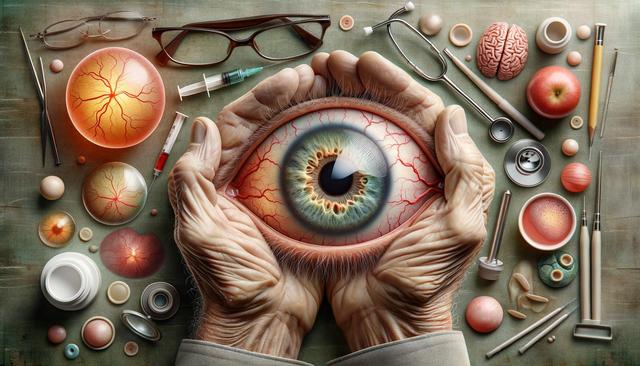Understanding Age-Related Macular Degeneration (AMD)
Age-Related Macular Degeneration, or AMD, is a progressive eye condition that primarily affects older adults, leading to a gradual decline in central vision. The macula, a small but crucial part of the retina, is responsible for sharp, detailed vision. When this area deteriorates, activities such as reading, recognizing faces, and driving become challenging. AMD is categorized into two main types: dry and wet. The dry form is more common and progresses slowly, while the wet form, though less prevalent, leads to more rapid and severe vision loss. Recognizing these differences is essential for understanding the impact of AMD on daily life.
Symptoms and Early Detection
Early signs of AMD can be subtle, often going unnoticed until the disease has progressed significantly. Common symptoms include blurred or distorted vision, difficulty seeing in low light, and a diminishing ability to perceive colors. Some individuals may notice a dark or empty area in the center of their vision. Early detection plays a crucial role in managing AMD effectively. Regular eye examinations, especially for those over the age of 50, can help in identifying the condition early. Eye specialists use tools like optical coherence tomography (OCT) and fundus photography to detect changes in the macula before noticeable symptoms occur.
Causes and Risk Factors
AMD is influenced by a variety of factors, including age, genetics, lifestyle, and environmental elements. As the name suggests, age is a primary risk factor. Individuals with a family history of AMD are also at a higher risk. Lifestyle choices such as smoking, poor diet, and excessive sun exposure can exacerbate the condition. Some risk factors include:
- Smoking, which significantly increases the risk of AMD.
- Poor diet lacking in fruits and vegetables.
- Excessive exposure to ultraviolet light.
- High blood pressure and heart disease.
Understanding these factors can aid in developing strategies to mitigate the risk and slow the progression of the disease.
Prevention and Lifestyle Adjustments
Preventing AMD involves adopting a healthy lifestyle focused on eye health. A balanced diet rich in leafy greens, fish, and other foods high in omega-3 fatty acids can support macular health. Quitting smoking is one of the most impactful changes one can make to reduce the risk. Regular exercise and maintaining a healthy weight also contribute positively. Additionally, protecting the eyes from excessive sunlight with UV-blocking eyewear is advisable. Taking these steps can help maintain eye health and potentially delay the onset of AMD.
Treatment Options
While there is currently no cure for AMD, several treatment options exist to manage symptoms and slow progression. For dry AMD, nutritional supplements containing vitamins C and E, zinc, and beta-carotene may help. In cases of wet AMD, treatments such as anti-VEGF injections can inhibit abnormal blood vessel growth and prevent further vision loss. Laser therapy and photodynamic therapy are other options for specific cases. Collaborating with an eye care professional to tailor a treatment plan is essential for optimal outcomes.
Conclusion
Age-Related Macular Degeneration presents significant challenges, but understanding the disease, its risk factors, and potential interventions can empower individuals to take proactive steps in managing their eye health. Regular monitoring, lifestyle modifications, and treatment adherence are key components in coping with AMD. By staying informed and engaged with healthcare providers, those at risk or diagnosed with AMD can work towards preserving their vision and maintaining their quality of life.
